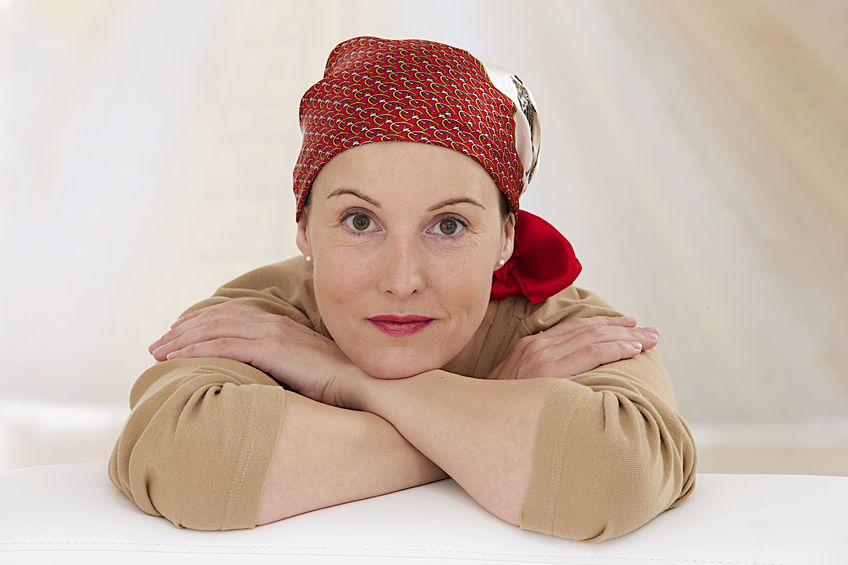Breast Cancer Awareness Month
Breast Cancer Awareness Month – Gavin Ashley Hair Salon Bury St Edmunds Provides Advice To Help You Cope With Hair Loss During Chemotherapy Treatments
Breast Cancer Awareness Month is organised by major breast cancer charities every October to increase awareness of the disease and the importance of early detection, and to raise money for research and treatment.
There are a lot of common misconceptions surrounding breast cancer and at a difficult time it is important that you have as many facts as possible. Overcoming your illness is the most important thing, but we would like to offer some advice on how to regain some normalcy during a period that is anything but normal.

Why Do We Wear Pink for Breast Cancer Awareness?
In the 1990s, pink ribbons were used to raise breast cancer awareness and the colour stuck. We wear pink to honour those who have lost their battles and support those still to come, whilst drawing attention to the fact that there is still so much more to be done to find a cure for this disease.
Hair Loss During Cancer Treatments
Hair loss can be one of the most distressing aspects of dealing with cancer and can have a devasting effect for some women when it comes to confidence and self-esteem.
Following chemotherapy, hair loss commonly begins within two to three weeks. The hair loss affects body and facial hair including eyebrows and eyelashes. However, hair loss is in most cases a temporary side effect of the treatment, so hair will start to grow back after chemotherapy is over or even towards the end of your cancer treatment.
In some instances, the hair that grows back after chemotherapy can look and feel different. You may notice the texture of your hair has changed, it may be curlier or seem finer than it used to be.
How to Treat Your Hair Before Chemotherapy Treatment
• Short hair can be styled in such a way that it can look thicker than longer hair, as your hair starts to fall out it will be less noticeable with a shorter hairstyle. A shorter hairstyle may also make the transition to hair loss less upsetting for you, it is important to keep stress to a minimum as much as possible during this time. Speak to your stylist about a shorter hairstyle before your treatment starts.
There are also some amazing high-quality synthetic wigs and real human hair wigs on the market, that you could try.
• Get into the habit now of being kind to your hair. Do not use harsh chemical treatments on your hair including perms or hair colour — this can weaken it.
Avoid heated styling tools as much as possible such as straighteners & rollers and try to air-dry your hair wherever possible so as not to cause unnecessary breakage. Why not enjoy a little me time with a relaxing hair treatment? Strengthening and nourishing your hair and scalp now might make it more likely to stay in your head a little longer during treatment.
How to Care for Your Hair During Chemotherapy
• Continue to be gentle with your hair throughout your chemotherapy treatment. Use a soft brush, such as a baby brush. Use a gentle shampoo free from parabens and chemicals. Wash your hair only when very necessary.
• Some women report that their scalps sensitive, itchy and can become irritated during their chemotherapy treatment and whilst their hair is falling out. It is possible to reduce the irritation by shaving your head.
•Your scalp can become very sensitive throughout treatment and so you must protect it with a sunscreen, or even a head covering such as a wig or headscarf. Extreme cold can also make your head feel sensitive, so ensuring that it is covered will help you to feel less uncomfortable.
Will My Hair Grow Back After Chemotherapy?
• Your new hair growth will be especially fragile and vulnerable to damage, so you should continue with your gentle treatment. Do not colour your hair until it becomes stronger, this may damage your new hair and irritate your scalp. Avoid heated styling such as rollers or curling tongs and air dry your hair as often as possible.
•New, healthy hair growth takes time. Your new hair may grow in slowly and could grow back in a different texture or colour to before, sometimes previously straight hair can grow back curly. You will need to be patient as it could be up to 6 months until you can expect a healthy head of hair.
